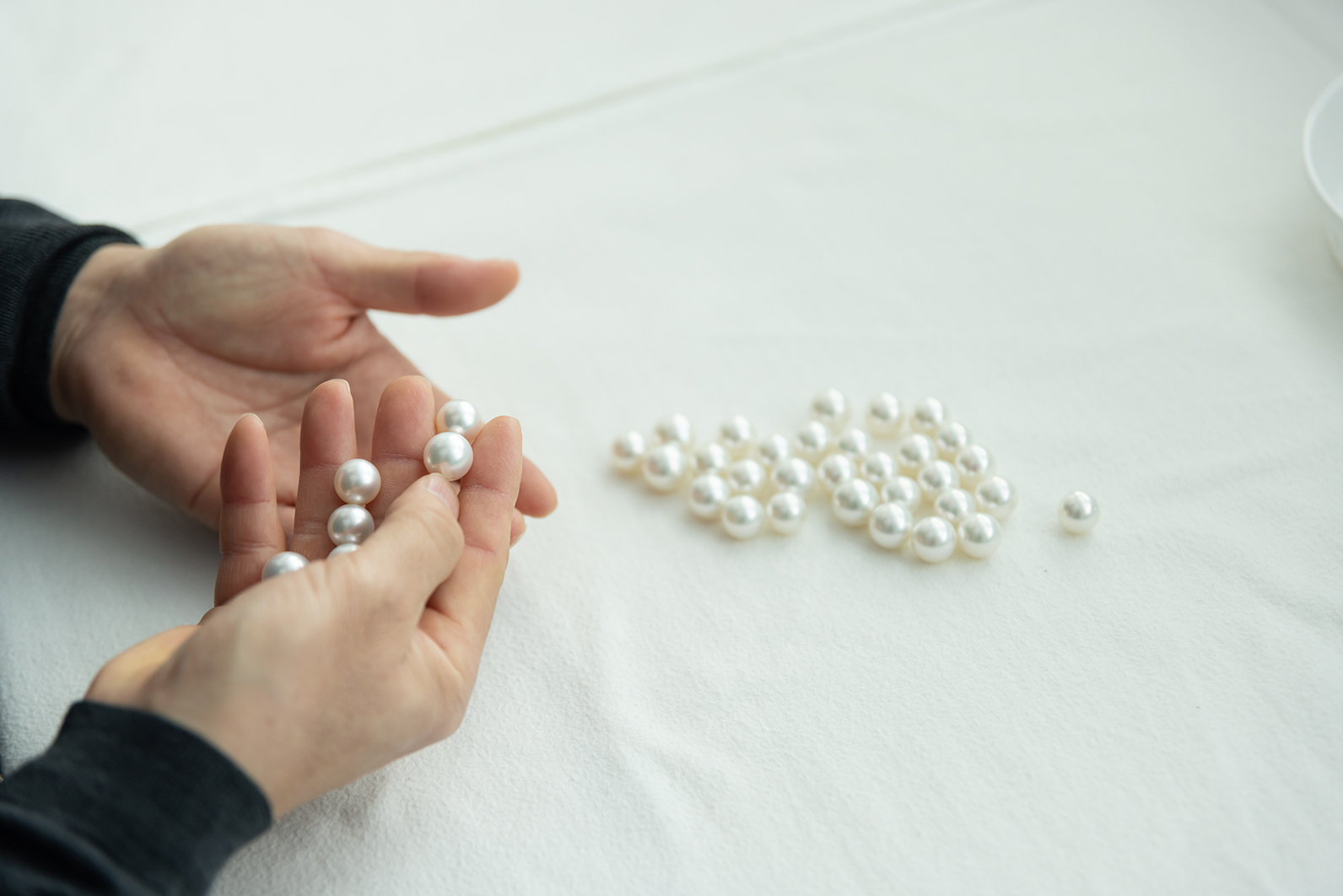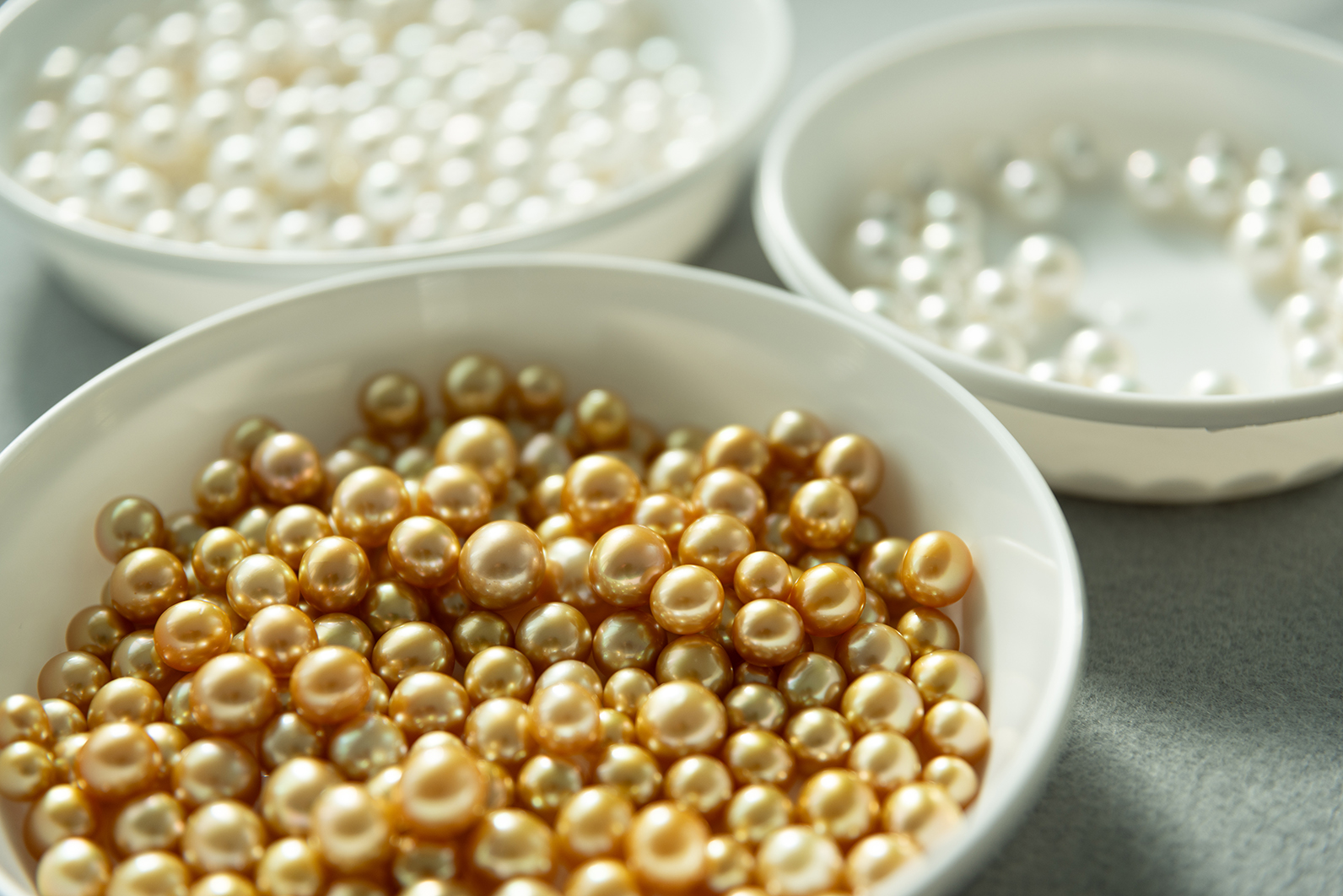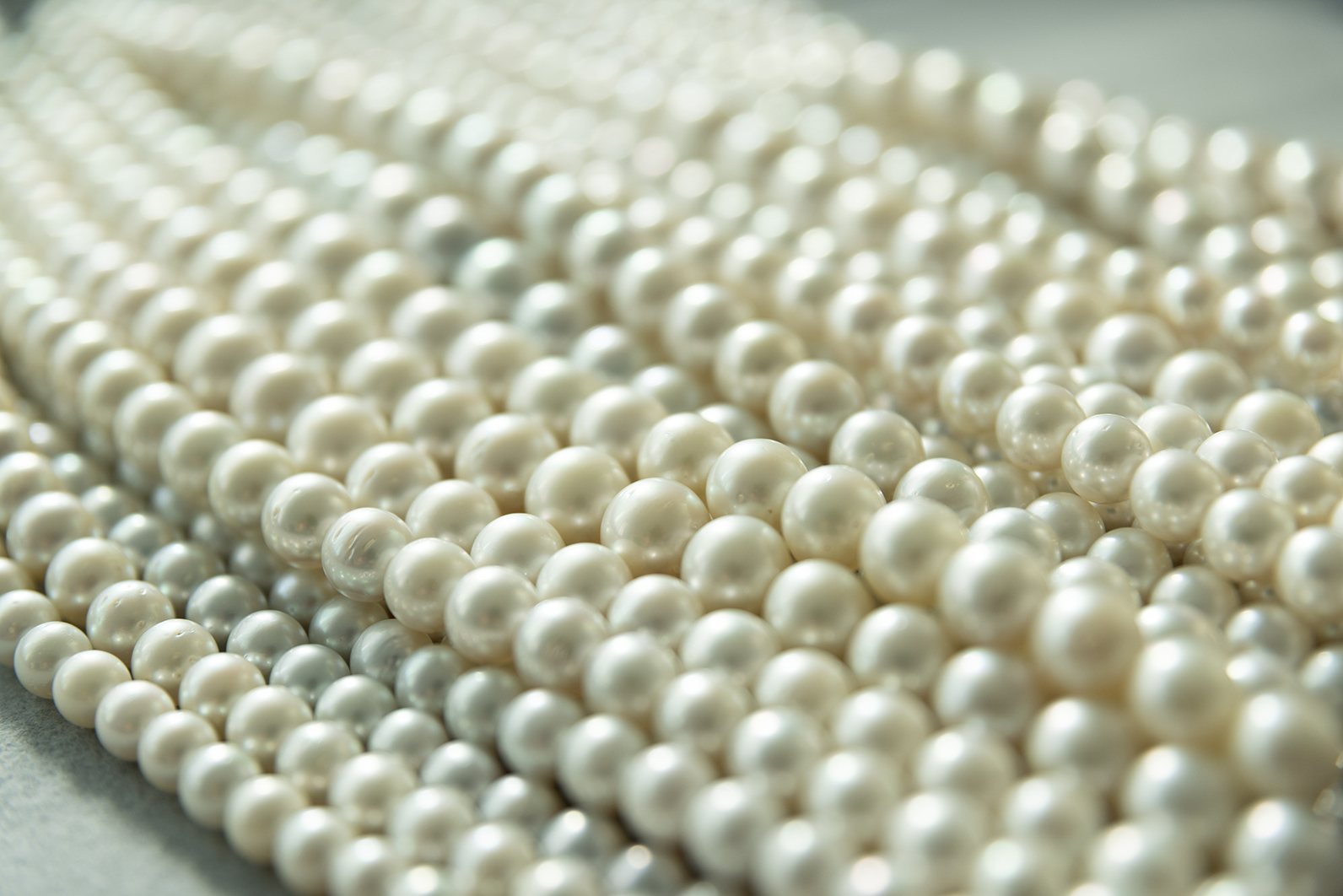How to Choose Pearls
Similar to humans, each pearl-producing mollusk possesses its own individual characteristics.
The cultivation of these mollusks is also refined year after year, making it impossible to replicate the exact conditions.
As a result, each finished pearl carries distinctive features. Consequently, no two pearls in the world are identical.
There are six factors that determine the value of these pearls: size, color, luster, surface quality, shape, and blemishes.
In terms of evaluation, pearls that are round, have minimal blemishes, and possess a high luster are generally the most rare and valuable.
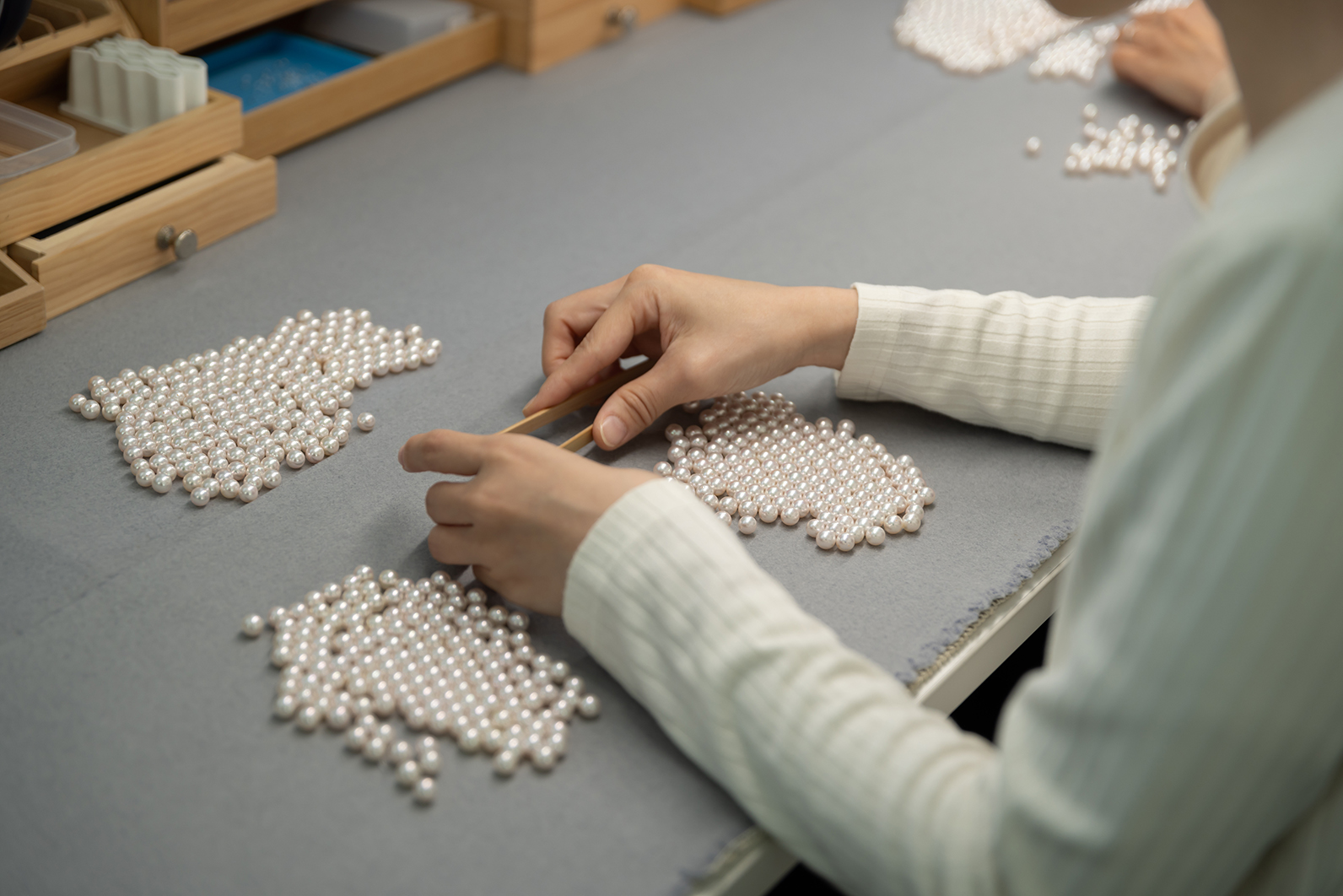
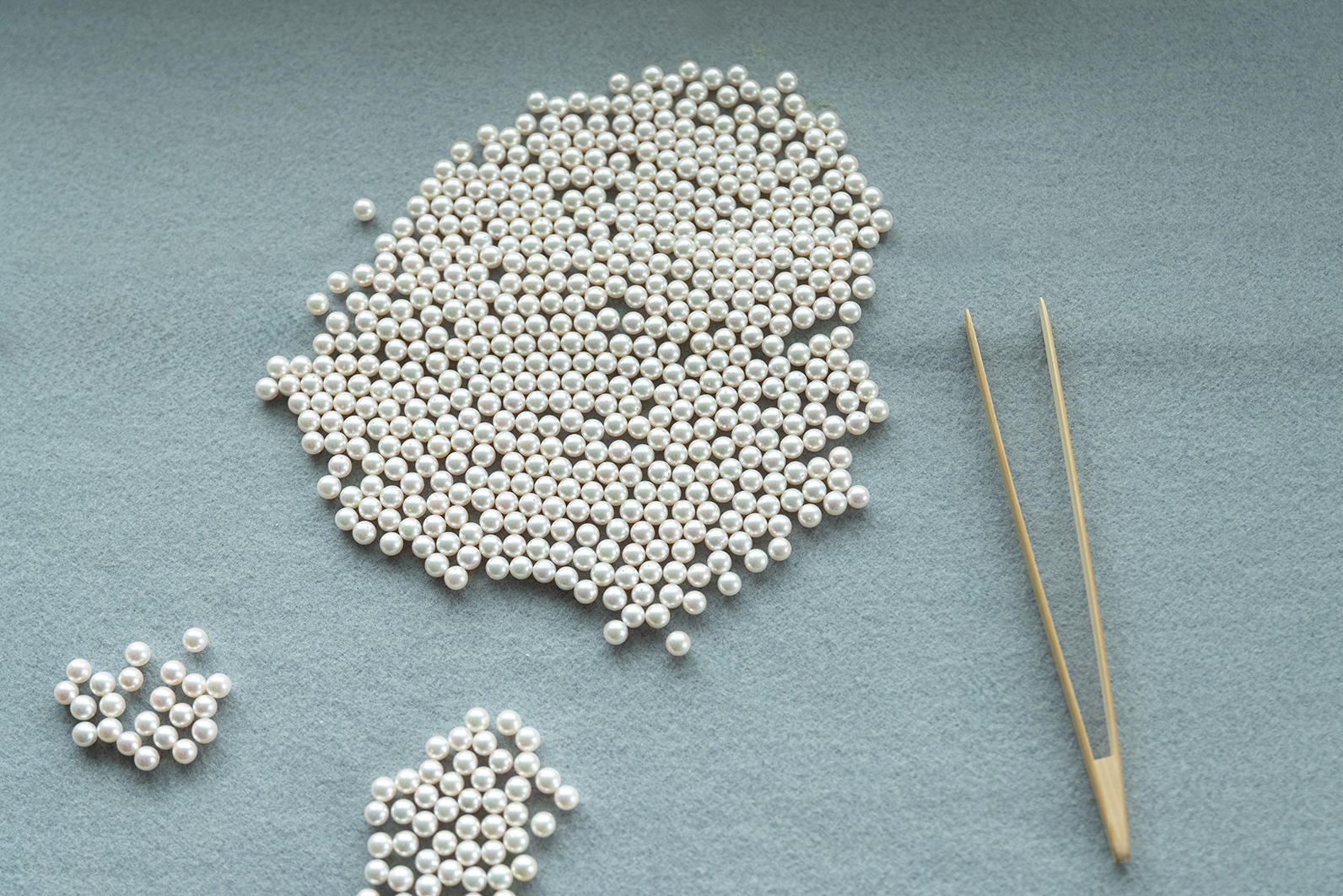

Size
In general, for pearls of the same quality, as the size increases, their value rises, and consequently, their price also increases. The size is measured in millimeters (mm) and represents the diameter of the pearl. In the case of necklaces, the measurement encompasses the minimum value of the center pearl (the largest pearl) and the minimum value of the bottom pearl (the smallest pearl). For baroque necklaces, both values are measured at their maximum. Additionally, the unit used to express the length of the necklace is in inches. For products such as rings, pendants, earrings, and studs, the measurement is taken at the minimum value of that specific pearl.
Color
The color of pearls produced by mollusks varies according to their species. Additionally, even among pearls generated from the same species of mollusk, there are subtle differences in color. It’s believed that color is influenced by the mantle tissue (known as the “piece”) inserted into the mollusk simultaneously with the nucleus. This piece serves as the base and attaches to the nucleus, forming the layers of the pearl. Although these layers are formed on a nanoscopic scale, the actual color variation in the resulting pearl depends on which pigment is dominant (and this actually varies with the thickness of the piece; for example, the order of thinness from thicker to thinner is red, green, blue, and purple).
Luster
Luster, also known as “teri,” refers to the shine or brilliance of a pearl, embodying its radiance. Pearls are said to be the only natural objects in the world to possess tridimensional color-teri effects. The primary component, calcium carbonate, is layered uniformly on a nanoscopic scale, forming the layers of the pearl, and smooth-surfaced pearls exhibit luster. Luster is also related to the “roll” factor mentioned below, where pearls with thicker rolls tend to display more luster. However, it cannot be conclusively stated that thicker rolls equate to better luster. Luster, or teri, is not just about surface sparkle; pearls with a deep radiance that emanates from within are considered high-quality. Lustrous pearls emit a soft, unique glow that imitation pearls cannot replicate.
Thickness of Pearl Layer
When it comes to the thickness of the nacre layers, also known as “roll,” it requires extensive experience to visually discern the thickness. For the general public, identifying the roll thickness in a retail setting can be challenging. However, this roll thickness is the most critical factor in determining the value of a pearl. Scientifically, if we delve into the roll, it equates to 0.1mm in thickness for every 100 microns. Generally, when identifying the roll thickness and selecting pearls with thicker rolls, it’s important to focus on pearls that radiate a deep, captivating glow from within rather than just surface luster. Thicker rolls result in a deeper luster, which is why it’s recommended to choose pearls that exhibit this kind of alluring brilliance from within.
Shape
While round and nearly spherical pearls are considered of high quality, there are various other shapes beyond perfectly round pearls. These include oval-shaped, drop-shaped, triangular, and button-shaped pearls with unique forms. Irregular shapes with deviations are referred to as baroque pearls. Baroque pearls are distinctive and can be considered truly unique gems in the world. Pearls of this shape are known as “baroque pearls” and hold a strong popularity, particularly in regions like Europe. Additionally, there are pearls referred to as “keshi pearls.” During the cultivation process, foreign substances may become trapped within the mollusk, and to protect itself, the mollusk expels these substances. These expelled particles can become the nucleus, and if a pearl sac accidentally forms around it, and nacre layers develop, keshi pearls are produced. Consequently, keshi pearls lack a nucleus. Since they are cultivated rather than formed naturally, they differ from natural pearls.
Surface
Pearls with minimal blemishes are considered rare and therefore hold higher value, often resulting in higher prices. Generally, pearls with thinner nacre layers tend to have fewer blemishes. Similarly, pearls with less luster tend to have fewer blemishes. Conversely, when the nacre layers are thicker and the luster is deeper, there’s a tendency for blemishes to be more prominent. However, because pearls are products of nature, it’s inevitable that natural blemishes form during the process of nacre layer formation.
